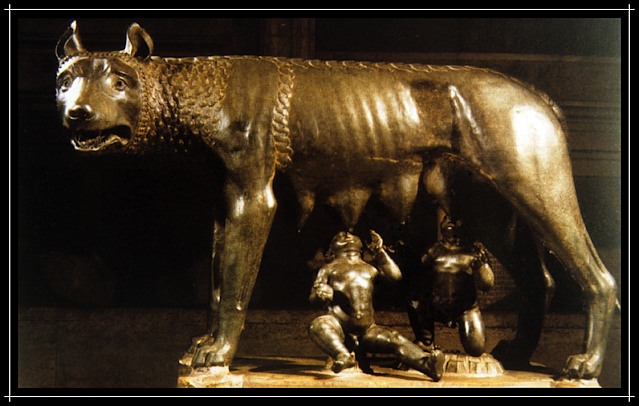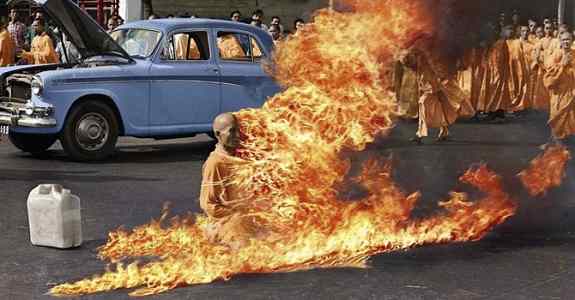The Koryos (and Maybe Werewolves)
He’s a werewolf! That’s why he’s been missing classes! —J. K. Rowling
In the past, when I was an ordained member of the Leisure Class, I read a lot of books, and so I would come across many strange ideas that would then percolate through my head and wind up as blog posts. But since I left the Bhikkhu Sangha last year I have read very little, and my time and energy for pursuing strange ideas has become more limited. But then last night I happened to watch a strange video on YouTube, which had information in it that I had never heard before, and which was right up my alley. Last night and earlier today I have studied up on the topic a little more, and now I sit here writing about something to which I was oblivious just two days ago: the koryos.
Before wading into that, though, I will mention that it has to do with the Proto-Indo-European peoples, vulgarly known as “Aryans.” This is a subject that I find very interesting, as I speak an Indo-European language, live in a predominantly Indo-European culture, and have Indo-European ancestors. It is of course common knowledge among the brainwashed that every ethnicity should have pride in, or at least take a pleasurable interest in, its own past and heritage…except white people of European ancestry. But white people obviously have a very great heritage, which is one reason why almost every other ethnicity on the planet tries to imitate us. The Indo-Europeans, or “Aryans,” conquered much of the world, and their ancestors conquered even more of it, because of certain very great strengths of that people. I have written about these ancestors elsewhere on this blog, so I won’t go into too much detail, but the “Aryans” were so successful for a number of reason, including:
1) They were a physically large, strong, and robust race of people.
2) They were some of the first, possibly the very first, to tame horses and ride on their backs, thus creating the first cavalry, a devastating new military technology, against which few non-horse-riders could defend themselves.
3) They also invented the war chariot, with similar consequences.
4) They were also among the first, if not the very first, to use iron implements, including of course iron weapons.
5) They upheld a very masculine, patriarchal, even heroic culture and set of values, which made valor and skill in war very highly valued virtues.
6) They were lactose tolerant, which meant they could drink milk with no ill effects, and thus they could live at higher population densities than other pastoralists because dairy cows produce more calories and protein per unit of land than beef cattle do.
7) And, importantly, they had a very sophisticated (relatively speaking) and flexible language (evolving into the languages of most of the people alive today), which allowed them to think things that others could not think for lack of words and verbal concepts.
All of this, as I say, contributed to the phenomenal success of the Indo-Europeans, and they spread from Europe in the west to India and even western China (as the Tocharians) in the East. And, also as I say, their descendants proceeded to spread through the western hemisphere, Australia, southern Africa, and other parts of the world so that most of the earth’s population now speaks one Indo-European language or another. Greek, Latin, Sanskrit, Persian, Hittite, German, Russian, Lithuanian, Gaelic, and many other languages including English are all descendants of the Proto-Indo-European language. And their ways of thinking and seeing the world permeated the classical cultures of Greece, Rome, Persia, and India, as well as modern western civilization at its peak.
This should be no cause of shame for modern westerners with Indo-European ancestry, but should rather be at the very least a cause of some satisfied interest, if not actual pride. Our ancestors were masters of kicking ass, among many other things.
But as of last night I learned of a peculiar tradition of the prehistoric and early historic Indo-European peoples that is attested throughout the ancient Indo-European world, and which can be added to the list of reasons why this remarkable people were as successful as they were. That tradition is that of the koryos.
The term is reconstructed, based on correlative terms in known Indo-European languages. It means “armed people,” “war band,” “group of warriors,” or some such. Descendants of the word are found in Old Persian (kara), ancient Greek (koiranos, meaning “army leader”), Balto-Slavic (karyas, which means “army”), Celtic (koryos), ancient Germanic (*harjaz, meaning “troop” or “raiding party”), and continues in existence in Lithuanian karas, “war” or “army,” just to name a few examples.
The tradition of the koryos, briefly stated, is that in ancient Indo-European cultures it was the norm for teenage boys to be deprived of almost all of their possessions and driven into the wilderness to survive by hunting and making raids on other tribes. If they survived this ordeal, which would last at least a year or two, sometimes more, then they would be accepted back into the tribe as men, and allowed to marry and take upon themselves all the other rights and obligations of adult males of the tribe.
Based upon various types of evidence throughout the Indo-European sphere, teenage boys would be stripped naked, deprived of their normal status in the tribe, and sent out wearing nothing but a belt, signifying their obligation to a leader, sometimes an older man but usually one of their koryos group chosen by lot. They might also be given a wolf skin to wear, or possibly some scrap of clothing dyed black. They took on the wolf as a kind of totem animal (which survives today in many names containing the word for “wolf,” like Beowulf or Adolf, for example, and also in many legends and obscure festivals, like the Lupercalia in ancient Rome, as well as the legend of Romulus and Remus being suckled by a she-wolf).
These boys were plunged into a liminal state, which is appropriate for an arduous, transformative coming-of-age ritual: they were exempted from avoiding taboos of the tribe, like fighting at night, stealing, eating wolf and dog flesh, and even raping women (though not women of their own tribe). They were no longer boys but not yet men, no longer members of the tribe but still affiliated in a spiritual sort of way, no longer civilized but still spiritual beings, no longer even entirely human, but taking on aspects of wolves or wild dogs. These traditions survived well into the historical record in Greece (for example the ephebes of Athens), in Vedic India (though the ascendancy of the Brahmins eventually eclipsed the prominence of the warrior caste), and in many other cultures. It has been theorized that most Viking raiders were groups of these feral teenagers out on raiding parties as they survived as best they could during their time of banishment. Older men generally did not participate in Viking conquests until a few centuries later, when the Norse were no longer merely raiding but settling new lands.
The reason why this rather violent and arguably barbaric (but powerful) tradition of the Indo-Europeans was conducive to the “Aryan” conquest of most of the world is that these young raiders would spread out and away from their home tribe in search of animals to hunt and also foreign tribes to raid and plunder. Considering that many of the non-Indo-European tribes were not warlike and did not have horses, they were pretty much defenseless against the wolf-men, and would often simply surrender, making offerings to the raiders to spare them, including women, and many new “Aryan” settlements would simply be villages conquered by teenage warrior boys, who would simply stay in their conquered territory instead of going back to their home tribe to become ordinary fighters and tribesmen.
It has also been hypothesized that these howling young berserkers, fighting like wolves, without rules and often by night, gave birth to the legend of the werewolf. I’m not sure, though, if the raided societies came up with the idea, not knowing who or what was attacking them, or whether it arose with the Indo-Europeans themselves, whose teenage boys would wear wolf skins or simply run about naked, act like wolves, identify as wolves, and even sacrifice and eat wolves, yet another act that was usually taboo, but was acceptable to the liminal beings earning their manhood by behaving like animals. This was, after all, an age of magical thinking, in which the boys themselves might very well consider themselves to be a kind of werewolf.
Anyway, I consider this to be very interesting. Especially the liminality built into a strong and virile culture, because liminality exploits weak points between the rules that maintain the world as it is, sometimes by flouting established norms, thereby allowing the paranormal, the magical, the “miraculous,” to arise through the cracks. Our civilization was built on that, even though now it is wandering through a wasteland of spiritually comatose materialism—the Reign of Quantity, as René Guénon expressed it. We need more liminality to keep us alive, really alive, not just breathing and “safe.”
 |
The video that started it all:
“The Koryos: the Indo-European Warband that Changed the World"







I recommend reading Siddhartha by Hermann Hesse, it's not lengthy and well-written. It's about a man (not the Buddha) who is seeking enlightenment.
ReplyDeleteI read it long ago. I also saw the movie.
DeleteBasically an Amish Rumspringa without the pacifism.
ReplyDeleteNow I feel like I was deprived of my teenage years.
ReplyDelete